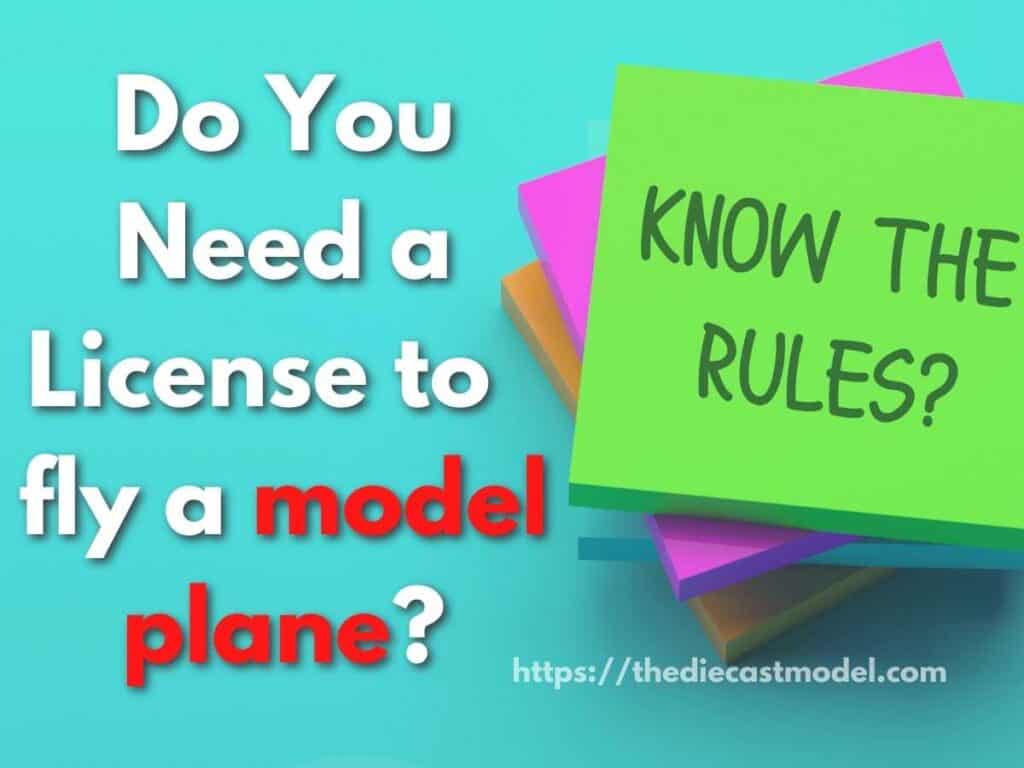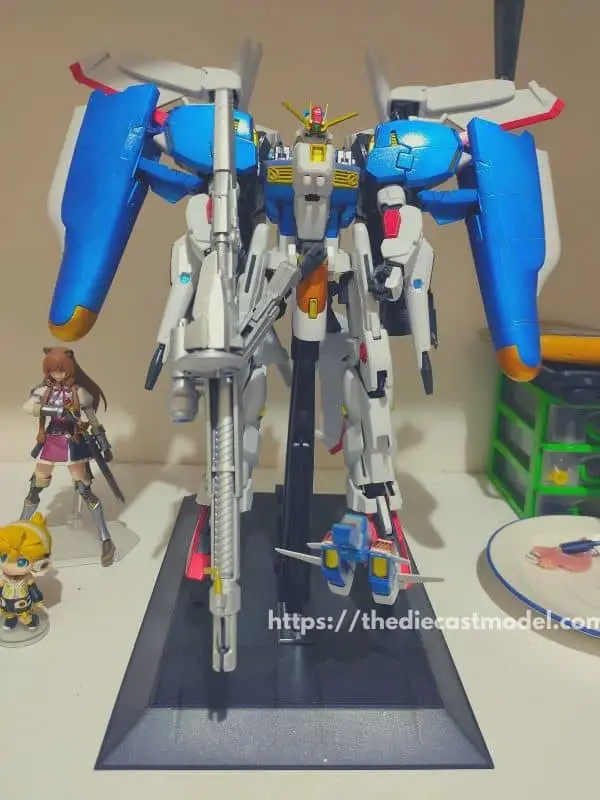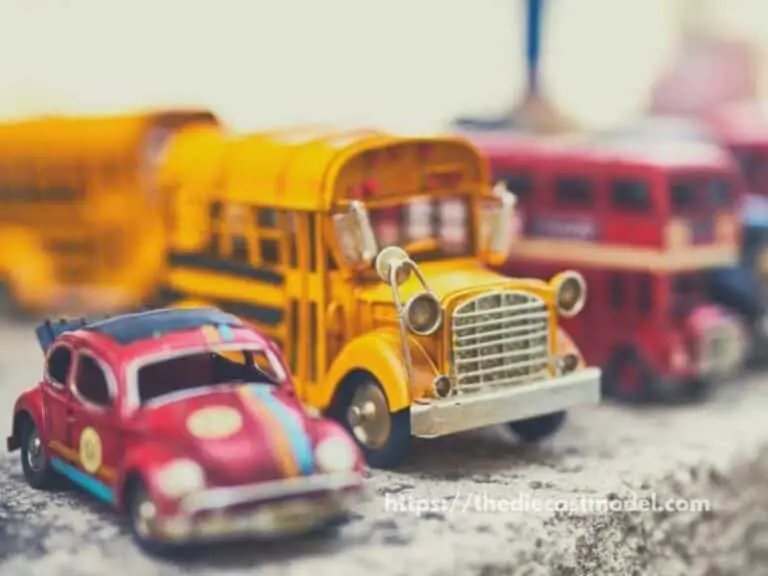Do you need a license to fly a model plane?
One of the questions people who want to buy a model plane or drone would have, is if a license is required to fly them. This is an excellent question to ask since a few months back, I was reprimanded for flying a drone without any permit. Thus, I decided to do some research and write this blog post to give you some insights regarding the topic.
As a general rule, you need to have a license to fly a model plane or drone, even for recreational use. However, the requirements for flying these models vary from country to country. For example, you need to pass the TRUST exam to fly a model plane in the USA or have the Basic Operation license to fly a model plane in Canada.
To make this blog post, I have searched numerous government sites to check their requirements. As a result, I have compiled the USA, Canada, UK, and Australia rules regarding the topic. This is to give you complete information. Furthermore, you can check these government sites for updates in the sources section at the end of this article.

Do you need a license to fly a model plane in the USA?
In the USA, you need to pass The Recreational UAS Safety Test (TRUST) exam issued by the FAA to fly a model plane or drone. The exam consists of important safety and regulatory information to avoid causing harm to both you and other people. You may take the exam for free via their approved test administrators.
To see the latest list of approved test administrators, you may check out TRUST by FAA here: The Recreational UAS Safety Test (TRUST)
Before, in the United States, you didn’t need to apply for a license to fly your recreational RC flyers or model planes.
That’s why you might have met somebody who has flown a model plane without a license.
However, conditions have changed with the enactment of the FAA’s 2018 Reauthorization Bill.
The Federal Aviation Administration has implemented a “Recreational Knowledge and Safety Test” required for all unmanned aircraft flyers.
In the Recreational Knowledge and Safety Test, now known as Trust, the test taker has to answer about 25 questions.
If the test taker misses a question, the test will return to that question and provide information for the test taker to read and select an answer again.
It is also worth noting that the test will not be as extensive as a part 107 exam, which commercial drone pilots must pass.
The Academics of Model Aeronautics (AMA) will administer the test.
People of all ages can take the test; however, children under 13 will require parental or guardian consent to take the test.
The Recreational Knowledge and Safety test is one of eight requirements outlined in the FAA Reauthorization Act of 2018 for the use of recreational small unmanned aircraft (those weighing less than 0.55 pounds).
The other conditions are as follows:
a) The plane is only used for recreational purposes. Check the FAA website if you intend to use an uncrewed aircraft for commercial purposes.
b) The plane is operated under or within the programming of a community-based organization’s (CBO) set of safety guidelines developed in collaboration with the FAA.
c) The Academy of Model Academics of Model Aeronautics (AMA) is an example of a CBO. In addition, during this interim period, the FAA guides recreational flyers to basic safety guidelines on its website (faa.gov/uas), which are based on industry best practices.
d) The plane is flown within the visual sight of the operator or a visual observer at the same location and in direct communication with that operator (in the case of “First-person view,” for example, using an onboard camera and operator goggles).
e) The plane is flown so that it does not interfere with or give way to any human-crewed aircraft.
f) You can operate your plane only on authorized fixed sites in controlled airspace, places like near airports. The FAA’s website has a list of official fixed sites.
g) You may fly recreational model planes up to 400 feet above ground level in uncontrolled airspace.
h) The plane is registered and marked.
It is also worth noting the requirements to fly a model plane or drone for recreational use. Here are the requirements according to FAA.
Requirements to fly a Model Plane or Drone for recreational use:
- Pass The Recreational UAS Safety Test (TRUST)
- All drones that weighs more than .55 lbs, must register through the FAA’s DroneZone
- Follow the safety guidelines on the FAA website
Important Note: After passing the TRUST exam, you will receive a completion certificate. The certificate doesn’t expire, but you need to retake the exam if you happen to lose the certificate.
So make sure that you won’t lose your certificate since you have to retake the exam if you happen to lose the certificate.
Do you need a license to fly a model plane in Canada?
In Canada, you need to have at least the Basic Operation Pilot Certificate to fly a model plane or drone that weighs between 250g to 25kg. Furthermore, the model plane or drone you’re using must have a registration number. You may be fined if you fly a drone or model plane without meeting these requirements.
Drone pilots (Remotely Piloted Aircraft System) weighing between 250g and 25kg must obtain a certificate for a drone pilot.
Before flying, all drones must be registered with Transport Canada, and pilots have to mark their drones with their registration number.
There are two kinds of licenses:
- Pilot Certificate—Basic Operation
- Pilot Certificate—Advanced Operation
A Pilot Certificate – Basic Operations is required for pilots performing basic operations.
You are going for basic operations if you fulfill all three of the following conditions:
- You can fly through uncontrolled airspace
- You can fly the plane over 30 meters (100 feet) straight from bystanders
- You will never fly the plane over bystanders.
You are going for advanced operations if one of these three conditions is not met.
a) A Pilot Certificate – Advanced Operations is required for pilots who conduct advanced operations.
They must pass the Small Advanced Exam as well as an in-person flight review to obtain this certificate.
The flight review will evaluate a pilot’s ability to operate their drone safely.
b) To take a Small Basic Exam – you must be 14 years old or older to take the small basic exam and to take a Small Advanced Exam, you must be at least 16 years old.
Note: You may be fined if you fly a drone without meeting these requirements— $1,000 for recreational users and $5,000 for commercial users.
Do you need a license to fly a model plane in the UK?
You need a license to fly a model plane or drone that weighs more than 250g in the UK. In addition, you must pass a test that meets the CAA Drone and Model Aircraft Registration and Education Scheme requirements to prove your competency. However, there are exceptions to the rule, such as only flying a model indoors.
To fly a remote control aircraft or drone in the UK, you must first pass a test and register your RC plane.
Anyone operating an unmanned aircraft outdoors that weighs more than 250g must be registered as an Operator by the Civil Aviation Authority (CAA) and be able to provide evidence of competency.
The registration process is known as “Operator ID,” the competency test is known as “Flyer ID.”
Parents will be able to apply for an operator ID while your child applies for a flyer ID to fly the plane.
Parents must register their children under the age of 13.
Operators (i.e., pilots of RC/model planes and drones) must pass a test to demonstrate competency.
This test must meet the CAA Drone and Model Aircraft Registration and Education Scheme requirements (DMARES).
There are some exceptions if you fly a control line model or fly indoors.
Do you need a license to fly a model plane in Australia?
As of the moment, you don’t need a license to fly a model plane or drone in Australia, provided that you are using the drone only for recreational use. However, according to the Civil Aviation Safety Authority, accreditation to fly a model aircraft will be required starting May 30, 2022.
In Australia, flying a model plane for recreational purposes does not require a license.
However, if you are flying a remotely piloted aircraft weighing more than 2 kg for business purposes, you must have a remote pilot license (RePL).
However, things are going to change soon. The Civil Aviation Safety Authority (CASA) will need operators of unmanned aircraft weighing more than 250 g to register their aircraft and get accreditation soon to be implemented.
Accreditation will be provided for free and conducted by a short video followed by a quiz to test your knowledge.
You can complete it online.
However, Members of model aircraft associations who fly at CASA-approved model airfields won’t be required to become accredited if they only fly in that field.

“Only the things I love”
thediecastmodel.com is reader-supported. When you buy through links on the site, I earn an affiliate commission.
So, here are the things I love when taking care of my Diecast Models.
Cleaning the Models
The first we are going to talk about is cleaning the models.
Removing Dust
- Air Brush – For me, this is the best since it not just removes dust but you can use it in painting/clear coating.
- Air Duster – This is a good alternative to Airbrush
- Normal Brush – If you are short on budget, you can use a normal brush. However, make sure that the brush has soft bristles because there are some hard brushes than can cause scratches. That’s why I recommended a good brush that can do the job properly.
Cleaning and Shining Hacks
Well, here are some of my cleaning hacks for removing scratches, oxidation, and so much more.
- Removing Decal Adhesive – Use Goo Gone on those hard-to-remove decal adhesives. It works fast and works like charm!
- Waxing and Polishing – Here is something a lot of people don’t know. Waxing protects the clear coat and paint while polishing shines the model. Instead of buying it separately, use a 2 in 1 to save money. Get this instead.
- Beginner Wax – The wax I recommended earlier is good and provides the best results based on my experience. But a beginner might have a problem especially if they’re not good at applying wax. Solid wax reaching hard to reach surface can be hard to remove. You have two choices here. One is to use a qtips to reach those surfaces, another is to use a liquid wax I recommended.
- Cleaning Wheels, Rubber, Plastic – Do not forget that rubber and plastic surface are quite different, especially in the cleaning process. Just wiping it down won’t do the job. That’s why I use Meguiar’s Vinyl and Rubber Cleaner and Conditioner. Works like charm!
- Make the Wheels Shine! – Making our models look good won’t be complete without tiny details such as shiny wheels! Do not forget this because however small this is, the difference can be as big as night and day.
- Remove Scratches Easily – Tiny scratches are not the end for your model. Here is a simple trick I’ve been using to make my models look scratch-free even without repainting. Use T-Cut.
Painting the Models
Painting Tools
Make sure when you paint models, have these ready.
- Tape – A tape is important if you are painting a straight line. Furthermore, it will prevent your paint to scatter on other parts. I recommend Tamiya Tape since it is really made for models. Furthermore, they stick really well preventing paint splatters.
- Brush (Beginner) – Find a good set of brushes to paint your models. Of course, you can opt for an airbrush but it’s quite expensive.
- Airbrush (Intermediate/Expert) – This will yield a significantly better result than an ordinary brush because you can easily spray the paint evenly. I recommend this if you know what you’re doing.
- Stand(Optional) – Stands are good because it can be hard to manually hold the models while painting. It is optional but in my opinion, the price is well worth it for the comfort it gives.
- Drop Cloths – Drop Cloths will protect your surroundings from the paint.
- Primer – The most common beginner mistake I see is painting models without any Primer. A primer will prevent imperfections such as bubbles or paint not sticking to your models. It is a small price to pay for quality results.
- Clear Coat – A clear coat will protect the paint of your models. This will make the paint last longer. Also, it is the one responsible for making your models shine.
Paints
Of course, you can’t do painting properly without paint. So here are the ones I recommend.
- Acrylic Paint – Good for beginners because it dries quickly. However, it doesn’t produce results as good as enamel paint.
- Enamel Paint – Provides a good quality finish and longer-lasting paint. However, it takes longer to dry and requires expertise to use.
Model Maintenance
Model Storage
- Simple Wood Cabinet – While it doesn’t let you display your models, wooden cabinets are good storage for these models. For one, they are not heat conductors which means that the temperature inside will remain constant and remain cool. Furthermore, they prevent light from reaching the models which can cause oxidation.
- Clear Cabinet with Lock – If you want to display your models, then I recommend this. It closes so dust won’t easily get to your models. I also recommend you don’t put more than 1 model in each compartment since metals are good conductors of heat.
Model Photography
So you want to show off your models to others? Well, I got you covered.
Here is my beginner-friendly model photography tutorial that teaches everything from taking pictures to the editing process.
You will also see me doing hands-on photography in that tutorial.
Here is the link: How to Take Pictures of a Diecast Model or Model Kit | Helpful Illustrated and Video Guide
Sources:







